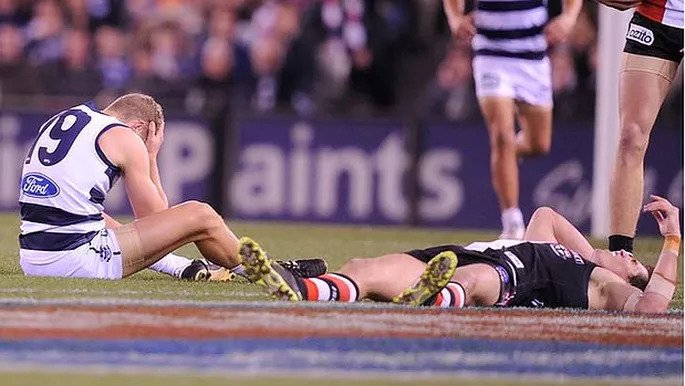From a simple knock to a serious injury a concussion can happen to anyone. With tough concussion rules being enforced across several sporting codes we take a look at what a concussion really is, how to recognize it , how to recover from it and how to minimize your risk.

What is concussion?
Concussion is a traumatic injury to the brain. It can cause stretching or tearing within the cells of the brain leading to damage and possible chemical changes within the brain.
How does a concussion occur?
Generally a concussion will occur due to a bump, blow, or jolt to the head. This can be due to another player, an object (such as the ball) or any other item of force.
A concussion can also be caused by force in which the body is forced to move violently back and forth. This can cause the brain to move within the skull, resulting in a concussion.
How do you recognise a possible concussion?
Signs and symptoms of a concussion are listed below. Essentially, if a player has suffered a blow to the head, or an incident in which the head has moved very quickly, a concussion should be considered. Any change in a players behaviour, thinking or physical function should be monitored. Also be aware, usually signs and symptoms will show soon after the incident, however the full effect may not be felt until after the game or even hours later. Players who are suspected of a concussion need to be monitored as such.
Signs and Symptoms
Signs
- Athlete appears dazed or confused
- Forgets an instruction, assignment or position
- Is unsure of game, score, opponent etc
- Moves clumsily
- Answers questions slowly
- Loses consciousness (even briefly)
- Shows moods, personality or behaviour changes
- Cannot recall events prior or after hit/fall
Symptoms
- Headache or pressure in the head
- Nausea, vomiting, dizziness, balance issues
- Blurry or double vision
- Sensitivity to light/noise
- Feeling sluggish, groggy, foggy or hazy
Danger Signs
These are symptoms that need to be taken very seriously. If they are to occur, please call an ambulance for the athlete.
- One pupil larger than the other
- Cannot be awakened
- Worsening headache
- Weakness, numbness or decreased co-ordination
- Repeated vomiting
- Slurred speech
- Convulsions or seizures
- Does not recognise people/faces
- Becomes increasingly confused, restless, agitated or displays unusual behaviour
What should be done when a concussion occurs?
- Remove athlete from play
- Have athlete assessed by appropriate medical profession, providing them with as much information about the incident and signs/symptoms as possible
- Inform the athletes coach and parents or guardians
- Keep athlete from play until they are safe to return to sport
Why be concerned about a concussion?
A concussion is a brain injury. Once this has occurred the brain needs time to recover and heal. Some athletes can suffer symptoms for hours, days, or even weeks. If the brain does not receive the time it needs to heal, permanent or long-term damage may occur. Long-term consequences are again enhanced if a repeat concussion was to occur before then brain has effectively healed.
Concussions are a serious injury, which can result in very serious consequences if not managed appropriately. Concussions can sometimes be fatal.
How should athletes return to sport after suffering a concussion?
A gradual return to sport is encouraged. Below is a 5 step process which should begin only once all symptoms have resolved. Moving onto the next step should also only occur if no symptoms appear after each step.
- Light aerobic exercise without head movement
- Moderate aerobic activity with the introduction of head movements
- Introduce heavy activity, but remain non-contact
- Return to full contact activities in controlled practice
- Return to competition
Preventing a concussion
- Ensure all athletes follow the rules of their specific sport
- Encourage good sportsmanship at all times
- Wear a helmet, headgear or protective equipment specific to chosen sport
Please be aware these devices do not prevent concussion or head injuries, but simply reduce the risk
- Ensure the athlete, as well as the coach/supervisor and parents/guardians are aware of the concussion guidelines provided by your sporting league, sporting association, district or school
